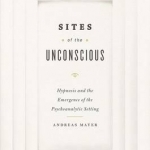Sites of the Unconscious: Hypnosis and the Emergence of the Psychoanalytic Setting
BookThis item doesn’t have any media yet
2013 | Philosophy, Psychology & Social Sciences
In the late nineteenth century, scientists, psychiatrists, and medical practitioners began employing a new experimental technique for the study of neuroses: hypnotism. Though their efforts to transform hypnosis into a laboratory science failed, soon thereafter Sigmund Freud took up the heritage of hypnotism when establishing psychoanalysis. In Sites of the Unconscious, Andreas Mayer examines the relationship between hypnosis and psychoanalysis, showing how the theories and experimental techniques of hypnosis paved the way for the familiar psychoanalytic setting established by Freud. Mayer analyzes Jean-Martin Charcot's research program in Paris and the so-called Nancy school led by Hippolyte Bernheim, stressing their divergent views on the relation between clinical practice and knowledge and their different ways of deploying hypnosis. Mayer then reconstructs the reception of French hypnotism in German-speaking countries, arguing that Freud's abandonment of hypnosis and subsequent development of the psychoanalytic setting was less a flash of singular genius than a fitting response to the issues raised by the French controversies.
In addition, Mayer addresses the distinctive features of Freud's psychoanalytic setting, revealing how Freud's couch emerged out of the clinical laboratories and private consulting rooms of the practitioners of hypnosis.
Related Items:
| Published by | The University of Chicago Press |
| Edition | Unknown |
| ISBN | 9780226057958 |
| Language | N/A |
Images And Data Courtesy Of: The University of Chicago Press.
This content (including text, images, videos and other media) is published and used in accordance
with Fair Use.
